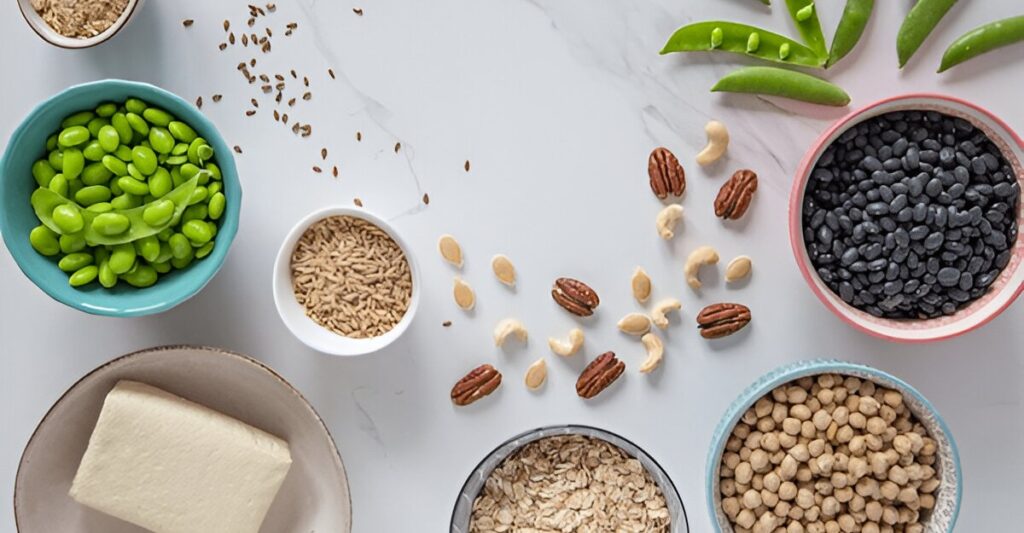Carb backloading is a strategic nutrition approach gaining traction among athletes, bodybuilders, and fitness enthusiasts. By timing carbohydrate intake around workouts, it aims to optimize performance, muscle growth, and fat loss while minimizing fat gain. But what exactly is carb backloading, and who can benefit from it? This article dives into the science behind carb backloading, its benefits and challenges, and practical tips to implement it effectively for your fitness goals.
What Is Carb Backloading?
Carb backloading is a dietary strategy where you consume most of your daily carbohydrates in the evening or post-workout, keeping carb intake low earlier in the day. Popularized by nutritionist John Kiefer, it’s based on how your body handles insulin and glucose at different times. The idea is to align carb consumption with periods of high insulin sensitivity—typically after resistance training—when muscles are primed to use glucose for energy and recovery rather than storing it as fat.
A typical carb backloading plan involves:
- Low-Carb Morning and Afternoon: Focus on protein, healthy fats, and non-starchy vegetables.
- High-Carb Evening/Post-Workout: Eat carbs like rice, potatoes, or fruit, often with protein, to replenish glycogen and support muscle repair.
The science behind carb backloading, supported by studies in Journal of the International Society of Sports Nutrition, hinges on insulin’s role in shuttling glucose to muscles and manipulating hormones like cortisol and growth hormone for better body composition.
How Carb Backloading Works
Carb backloading leverages your body’s metabolic rhythms and exercise-induced changes. Here’s the breakdown:
1. Insulin Sensitivity and Timing
After strength training, your muscles are more sensitive to insulin, meaning they efficiently absorb glucose to replenish glycogen stores. Eating carbs post-workout directs glucose to muscles rather than fat cells, per American Journal of Physiology. Earlier in the day, when insulin sensitivity is lower, high-carb meals are more likely to be stored as fat.
2. Hormonal Optimization
Low carbs during the day keep insulin low, promoting fat burning and stabilizing blood sugar. Evening carbs boost insulin and lower cortisol (a stress hormone that can break down muscle), while supporting growth hormone release during sleep (Endocrinology).
3. Glycogen Replenishment
Carbs consumed after exercise restore muscle glycogen, fueling performance and recovery. This is especially beneficial for those training intensely multiple days a week.
Carb backloading typically involves 30-50% of daily calories from carbs, consumed in a 4-6 hour window post-workout, with fats and proteins dominating earlier meals.
Benefits of Carb Backloading
Research and anecdotal evidence highlight several carb backloading benefits, particularly for active individuals:
1. Enhanced Muscle Growth
By timing carbs when muscles are insulin-sensitive, carb backloading maximizes glycogen storage and muscle protein synthesis, supporting hypertrophy (Journal of Strength and Conditioning Research).
2. Improved Fat Loss
Low-carb periods promote fat burning, while post-workout carbs minimize fat storage, helping maintain a lean physique (Obesity).
3. Better Performance
Replenished glycogen improves strength, endurance, and recovery, allowing harder workouts and faster progress.
4. Reduced Hunger and Cravings
High-fat, high-protein meals early in the day are satiating, while evening carbs satisfy cravings, making the diet easier to follow.
5. Hormonal Balance
Carb backloading may optimize cortisol, insulin, and growth hormone, improving energy, sleep, and recovery (Frontiers in Endocrinology).
Who Is Carb Backloading For?
Carb backloading isn’t for everyone, but it’s particularly suited for specific groups:
- Strength Athletes and Bodybuilders: Those lifting heavy 4-6 times weekly benefit from enhanced muscle growth and recovery.
- Endurance Athletes: Runners or cyclists with high training volumes can use carb backloading to fuel performance without excess fat gain.
- Fitness Enthusiasts: People aiming for fat loss while maintaining muscle mass find it effective.
- Those with Carb Cravings: If you struggle with low-carb diets, evening carbs can make nutrition plans more sustainable.
Carb backloading may not suit:
- Sedentary individuals or those with low activity levels, as they don’t deplete glycogen enough to justify high-carb meals.
- People with insulin resistance or diabetes, who need consistent carb distribution (Diabetes Care).
- Those with irregular schedules, as it requires consistent workout and meal timing.
Challenges and Risks
While carb backloading offers benefits, it has potential downsides:
- Complexity: Timing meals and workouts requires planning and discipline.
- Initial Fatigue: Low carbs early in the day may cause low energy, especially during adaptation.
- Overeating Risk: Evening carb freedom can lead to excess calorie intake if not moderated.
- Nutrient Imbalance: Focusing on carbs post-workout may skimp on fiber or micronutrients if vegetables are neglected.
- Not Universal: Results vary based on metabolism, training intensity, and adherence.
Consult a dietitian before starting, especially if you have medical conditions or specific dietary needs.
How to Implement Carb Backloading
To succeed with carb backloading, follow these practical, science-backed tips:
1. Time Workouts in the Afternoon or Evening
Schedule resistance training for late afternoon or early evening (e.g., 4-7 PM) to align with your carb window. This maximizes insulin sensitivity for carb uptake.
Pro Tip: If you can only train in the morning, shift your carb window to post-workout and keep the rest of the day low-carb.
2. Prioritize Low-Carb, High-Fat Meals Early
Focus on protein and fats for breakfast and lunch to keep insulin low and promote fat burning.
Morning/Lunch Foods:
- Eggs, avocado, spinach
- Chicken, olive oil, broccoli
- Greek yogurt, nuts
Pro Tip: Aim for 0.8-1.2 grams of protein per kilogram of body weight daily.
3. Choose Quality Carbs Post-Workout
Opt for nutrient-dense, easily digestible carbs to replenish glycogen without spiking blood sugar excessively.
Best Carb Sources:
- White rice, sweet potatoes
- Oats, quinoa
- Bananas, berries
Pro Tip: Pair carbs with protein (e.g., rice and chicken) for optimal recovery.
4. Monitor Portion Sizes
Calculate your carb needs based on activity level (50-150 grams post-workout for most athletes) to avoid overeating. Use a tracking app like MyFitnessPal.
Pro Tip: Start with 1 gram of carbs per kilogram of body weight post-workout and adjust based on results.
5. Stay Hydrated and Support Recovery
Carb backloading increases glycogen storage, which requires water. Drink 8-10 cups daily and include electrolyte-rich foods like leafy greens to prevent cramps.
Pro Tip: Add a pinch of sea salt to water to maintain sodium levels.
Sample Carb Backloading Meal Plan
Here’s a one-day plan for a 5 PM workout:
- Breakfast (8 AM): Scrambled eggs with avocado and sautéed kale.
- Lunch (12 PM): Grilled chicken with roasted zucchini and olive oil.
- Snack (3 PM): A handful of almonds and Greek yogurt.
- Post-Workout Dinner (6:30 PM): Baked salmon with white rice, steamed broccoli, and a banana.
- Evening Snack (8 PM): Protein shake with berries and oats.
Final Thoughts
Carb backloading is a strategic nutrition approach that aligns carb intake with your body’s metabolic needs, offering benefits like muscle growth, fat loss, and improved performance. While not for everyone, it’s ideal for athletes and fitness enthusiasts with intense training schedules. By timing workouts, choosing quality carbs, and balancing nutrients, you can make carb backloading work for you. Start gradually, monitor your progress, and adjust as needed to unlock its potential for your fitness journey. With the right plan, carb backloading can be a game-changer for achieving your goals.


